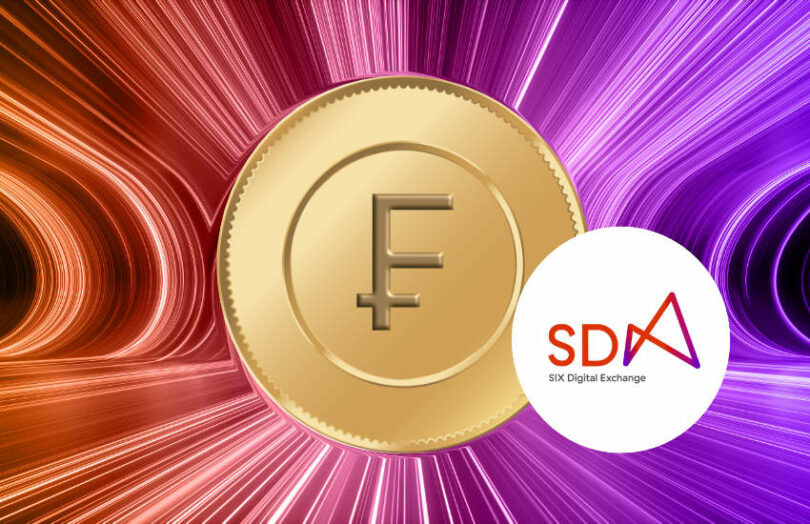The SIX Digital Exchange (SDX) was the first stock exchange to launch a blockchain-based secondary market for digital securities. Equally groundbreaking is its work with the Swiss National Bank (SNB) as part of Project Helvetia III, allowing a real wholesale central bank digital currency (CBDC) to be used for the settlement of digital security transactions on SDX for a limited time. SDX Head David Newns shared some of the details with Ledger Insights.
There are several reasons why this wholesale Swiss franc pilot is different from other interbank CBDC experiments, but two stand out. Most other pilots are one off trials, whereas this is for regular SDX transactions. Secondly, the blockchain infrastructure that powers the payments isn’t a test platform that needs to be further developed to reach production grade. It is currently live.
SDX’s cash on ledger is already in production
SDX had already solved cash on ledger. However, its current iteration involves SDX tokenizing cash, which means there is still counterparty risk because it’s not bankruptcy remote.
Outside of a CBDC, to use tokenized cash on SDX, a bank needs to deposit Swiss francs with SDX via the SIC payment network. SDX then uses its node on the SDX network to tokenize the cash and make it available for settlement.
Conceptually, the transition to a wholesale CBDC is simple. “When you change that to being a wholesale CBDC, now the operator of that node is the SNB. So in terms of technology, it’s the same,” said Newns.
And the same infrastructure has already been used in three previous wholesale CBDC trials, Project Jura and Projects Helvetia I and II. From a legal perspective, a CBDC is quite different.
Newns is optimistic that the pilot will go well but is cautious about second guessing whether the SNB will extend the pilot to becoming permanent. He added that SDX has already explored alternatives with the SNB and SDX members that achieve “similar-ish” outcomes. But a CBDC “checks all the boxes”.
So far seven institutions are SDX members, a figure Newns expects to double by the end of the year. “A significant number of additional members are onboarding over the next few months, off the back of both their interest in participating in Helvetia III. But also because I think it’s a real landmark or driver of confidence in the market, of the direction of travel that we’re taking in Switzerland’s capital markets.”
By that, he means the migration of the capital markets to DLT infrastructures.
Could SDX play a role in tokenized bank deposits?
Regarding the cash on ledger infrastructure, is it possible that SDX could not only facilitate central bank money but also tokenized commercial bank money? At the end of last month, the Swiss Banking Association announced it was coordinating a tokenized deposit project with a dozen banks, at least three of whom are members of SDX.
When asked, Newns was too professional to give a direct answer. “I only have the license to operate a CSD (central securities depository) and exchange at the moment. Therefore I can only settle securities transactions with that tokenized money, ” he said.
“But you could imagine that there might be significant opportunities outside of settling securities atomically that would also benefit from having cash on ledger.”
The issue with bank deposit tokens is they are so-called colored coins because each bank is different. A customer of one bank doesn’t want to receive the tokens of another bank. So on receipt, the sender’s bank tokens need to be switched to those of the recipient’s bank. And that requires settlement between the banks. Hence there needs to be an interbank settlement infrastructure.
“When those customers transact with each other and generate those liabilities, wouldn’t it be good if you could settle those liabilities wholesale between those banks in a CBDC?,” observed Newns. “Yes, that would be a very interesting sort of structure. I happen to have a solution for that.”
Not having a license is the issue. But getting a license might not be a massive hurdle in terms of timeframes. Particularly considering SIX happens to operate SIC, Switzerland’s real time gross settlement (RTGS) system.
SDX’s unique role in defining capital markets
The SIX group is in a unique position globally to transform the market infrastructure into a natively digital one. It operates the RTGS SIC, the main stock exchange SIX, the conventional CSD SIS and now the SDX exchange and CSD.
“The role that SIX has within the market in Switzerland is unique because not only is it providing this set of services for the whole market here, but in the case of things like SDX, it can also provide that vehicle for bringing the whole market forwards. As an orchestrator and as a vehicle for migrating (to a digital infrastructure),” said Newns.
SDX addresses frictions in digital securities migration
Not only is SDX in a unique position, but it is also doing all the right things. Despite that, Newns is sanguine that the transition to digital markets is going to take time. SDX launched in late 2021 and now has just three bonds trading on the exchange, one of which was issued by parent SIX.
Five obstacles come up repeatedly when discussing the frictions in this migration to a world of tokenization. And SDX has already solved or is in the process of addressing every one of them.
First off is the need for a secondary market for digital securities, which obviously SDX provides. Second, is a lack of digital custodians. The SDX CSD is linked to the conventional SIX CSD enabling those who are not digitally ready to nonetheless invest in digital securities but in the traditional way. This allowed SDX to host the largest ever digital security, the CHF 375 million UBS bond issuance.
Next is the ability to enable digital securities to be used as collateral for repo and elsewhere. The Lugano bond issuance on SDX ticks that box and was perhaps yet another first.
Some of these are examples of the need for interoperability with legacy systems. But interoperability is also required with other blockchain technologies, with other jurisdictions and to link with public blockchains. Again SDX is working on all of these.
And the final obstacle has been the lack of on-chain cash, the subject of this article.
Given SDX is perhaps the only infrastructure to be addressing every one of these frictions, we plan to publish additional SDX articles over the coming days and weeks.






